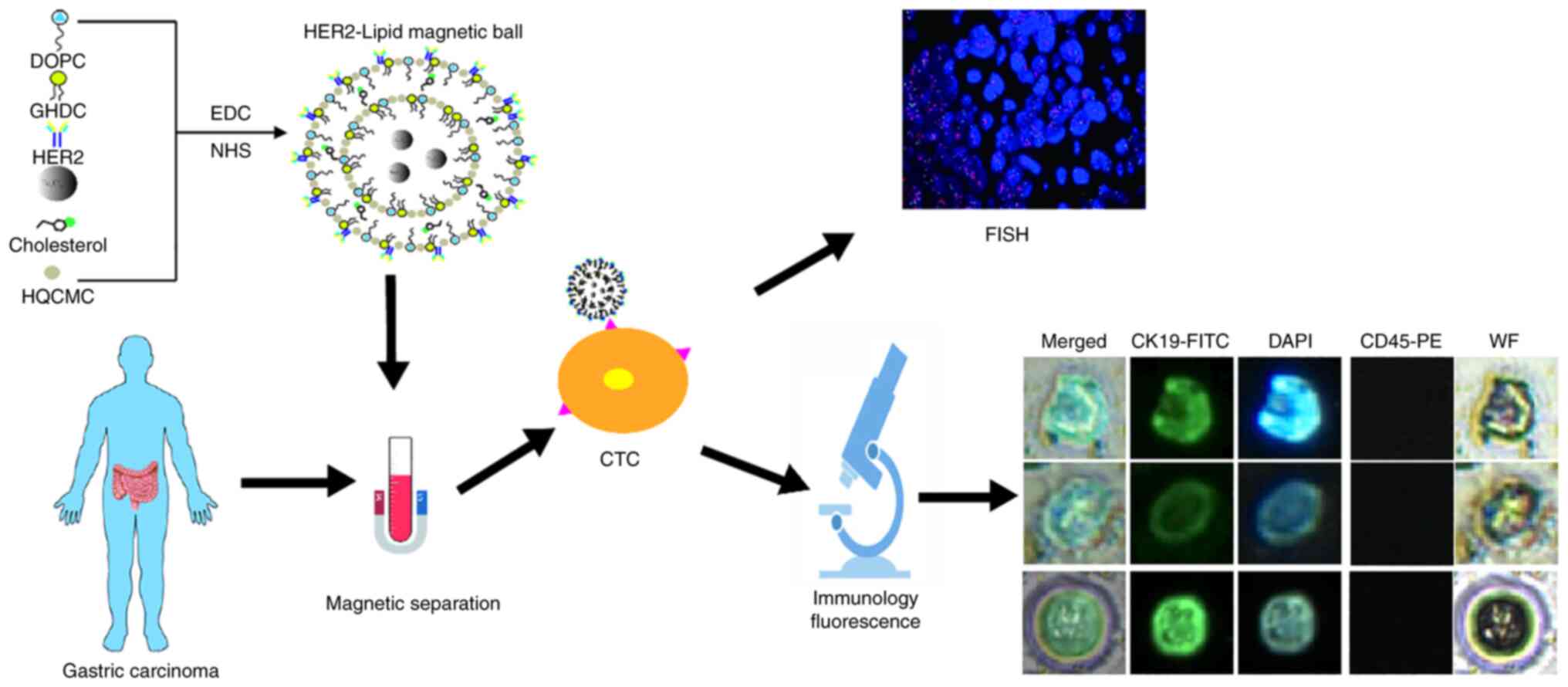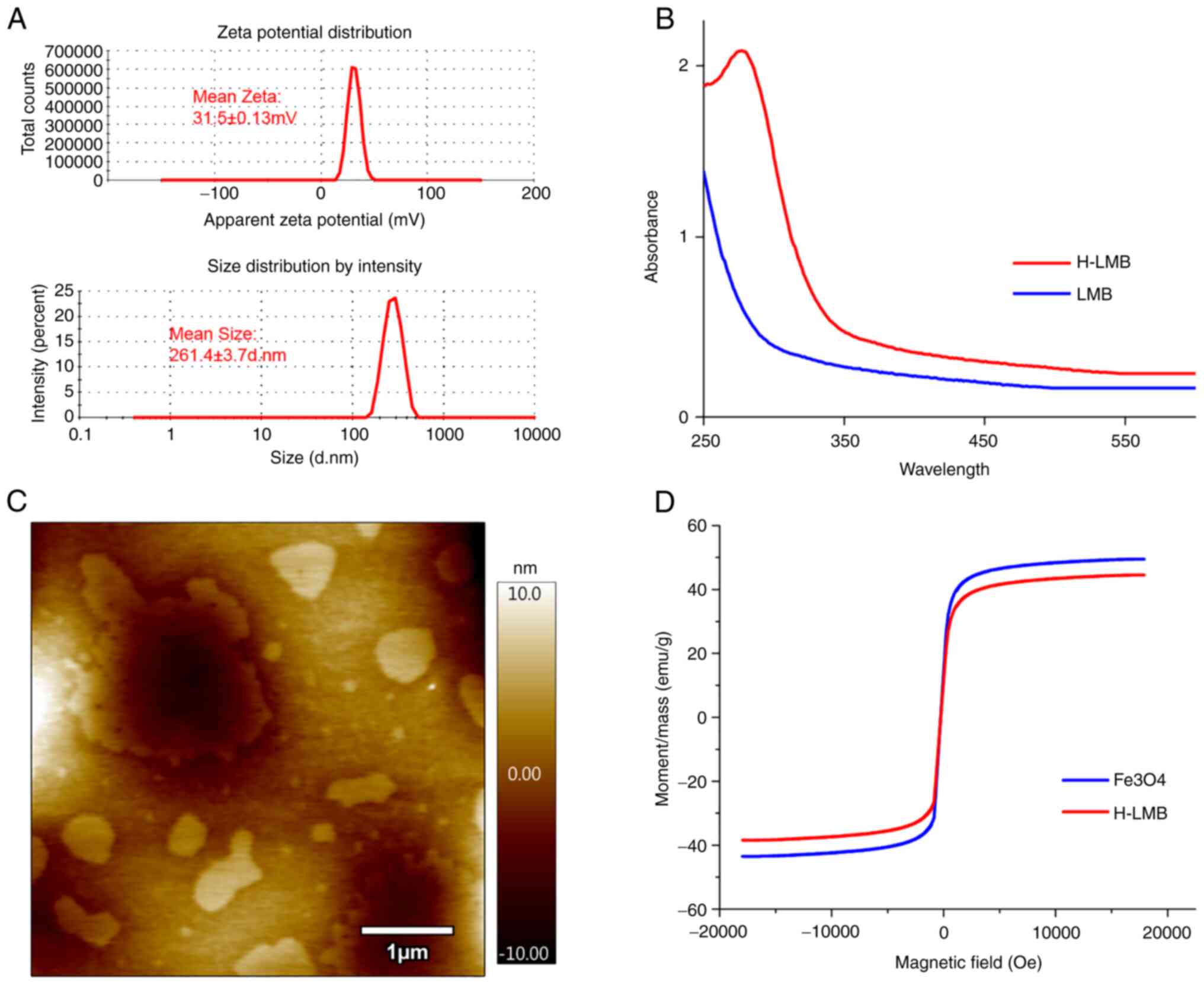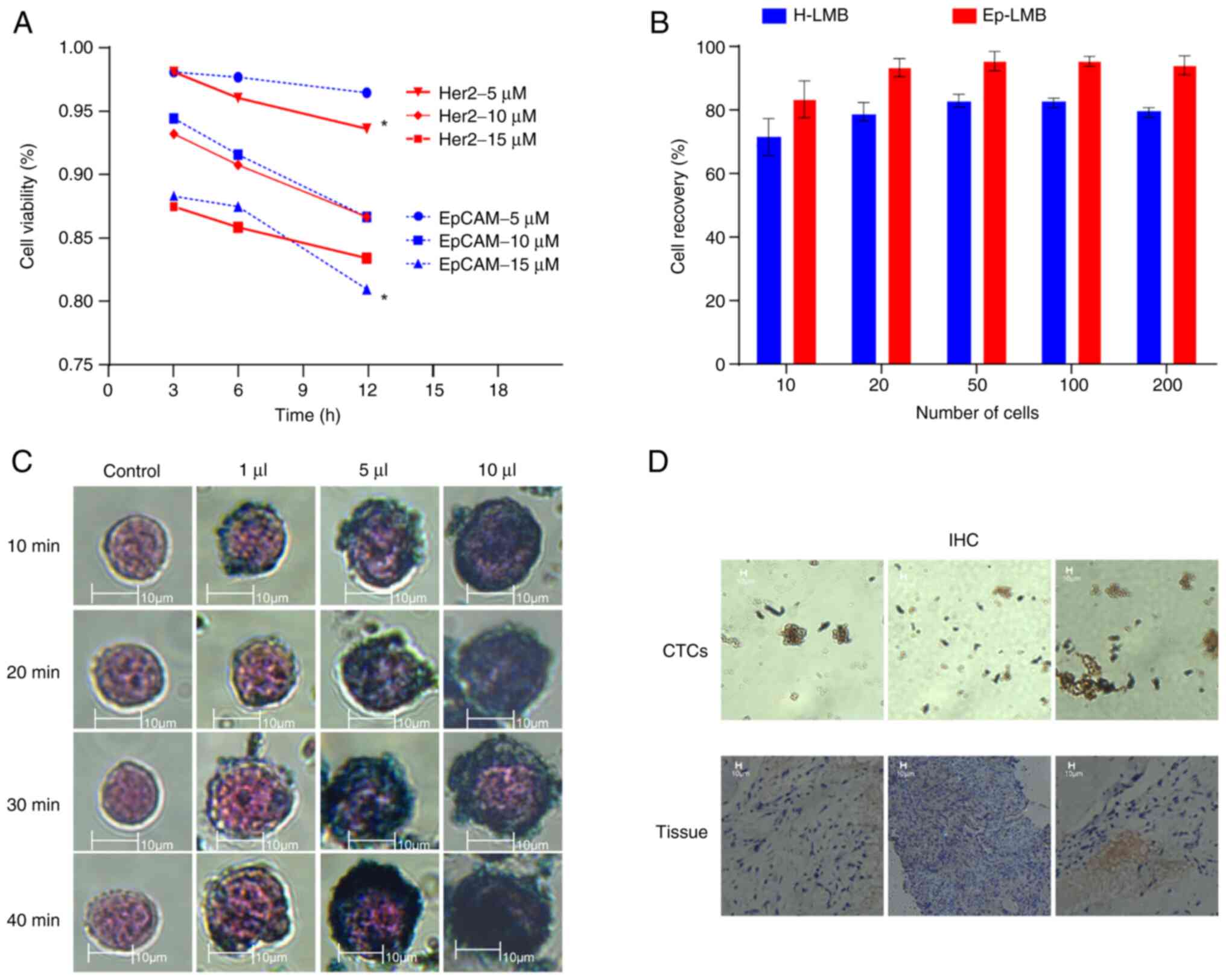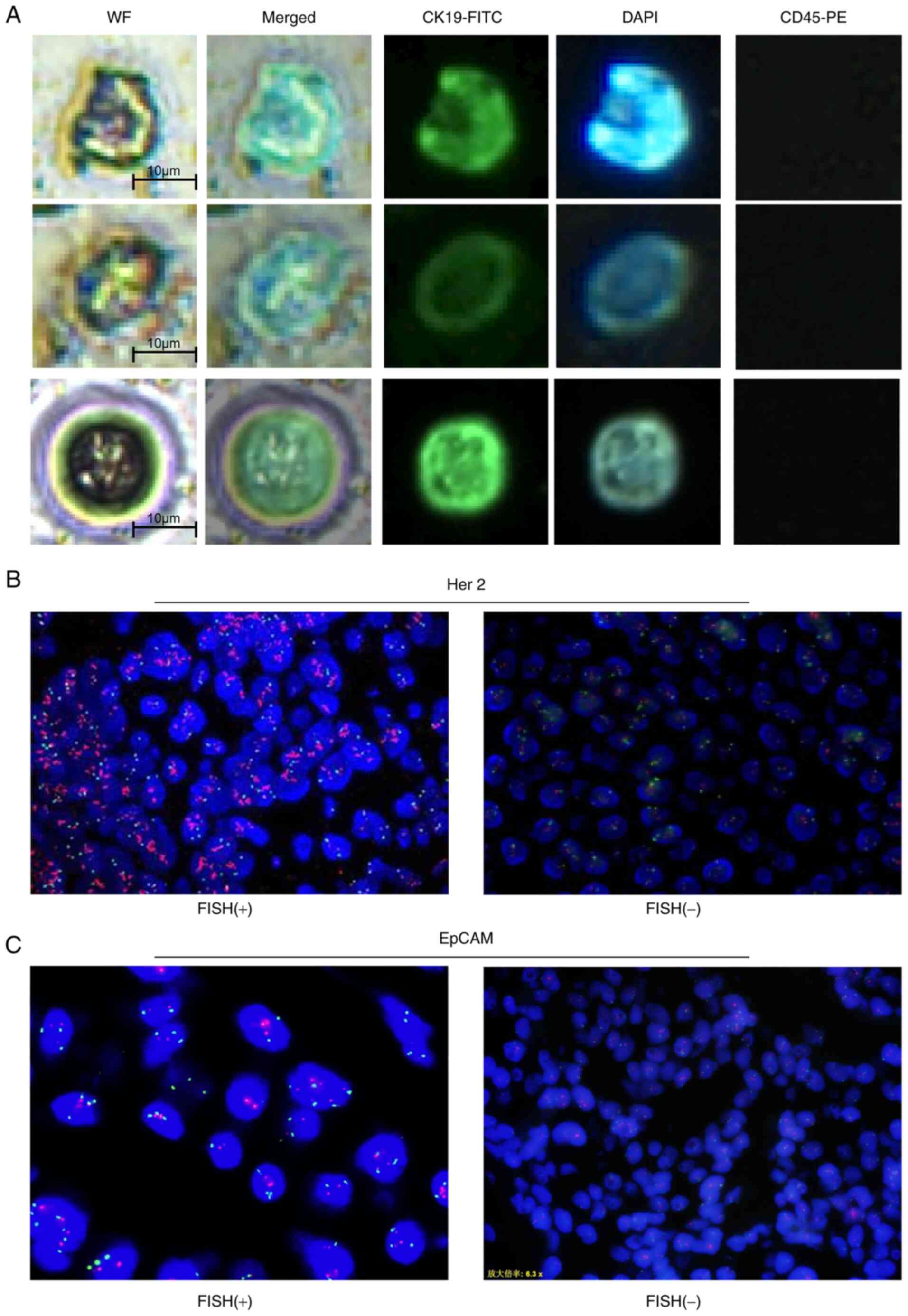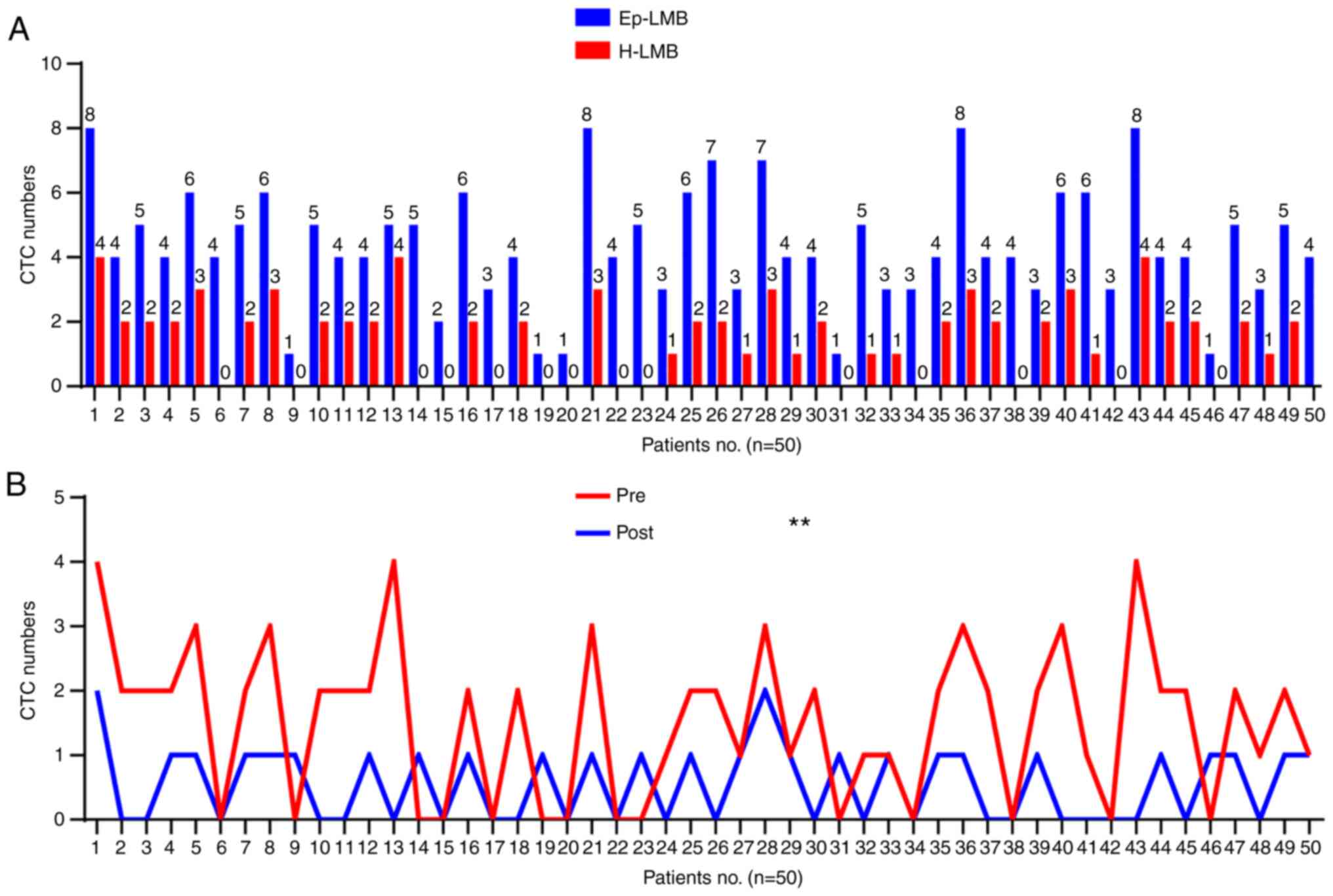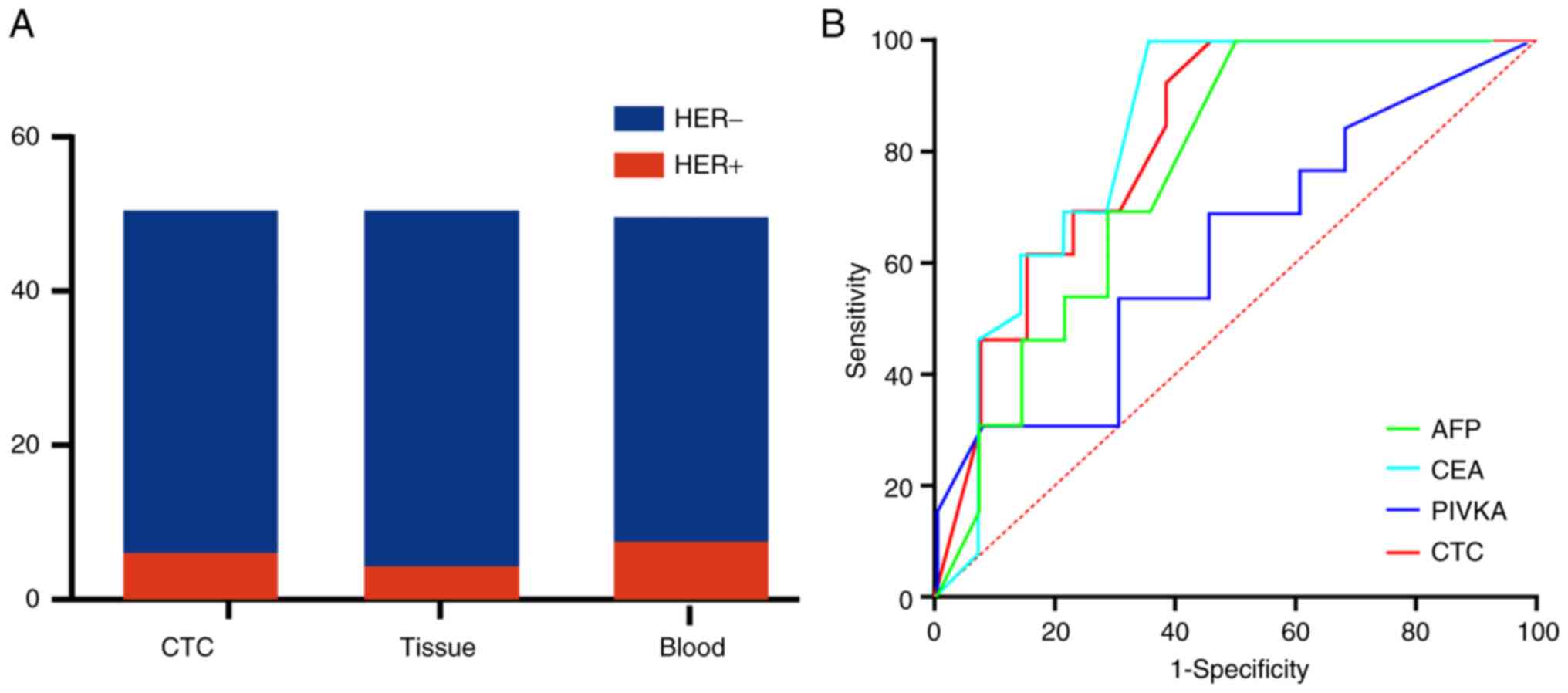|
1
|
Cancer Genome Atlas Research Network, .
Comprehensive molecular characterization of gastric adenocarcinoma.
Nature. 513:202–209. 2014. View Article : Google Scholar : PubMed/NCBI
|
|
2
|
Van Cutsem E, Bang YJ, Feng-Yi F, Xu JM,
Lee KW, Jiao SC, Chong JL, López-Sanchez RI, Price T, Gladkov O, et
al: HER2 screening data from ToGA: Targeting HER2 in gastric and
gastroesophageal junction cancer. Gastric Cancer. 18:476–484. 2015.
View Article : Google Scholar : PubMed/NCBI
|
|
3
|
Al-Batran SE, Kroening H, Hannig CV, Hamm
T, Moorahrend E, Petersen V, Eggers E, Hempel D, Zielke K,
Wohlfarth T, et al: Trastuzumab in combination with different
first-line chemotherapies for treatment of HER2-positive metastatic
gastric or gastro-oesophageal junction cancer: Updated findings
from the German non-interventional study Hermes. Eur J Cancer.
51:S4442015. View Article : Google Scholar
|
|
4
|
Kurokawa Y, Sugimoto N, Miwa H, Tsuda M,
Nishina S, Okuda H, Imamura H, Gamoh M, Sakai D, Shimokawa T, et
al: Phase II study of trastuzumab in combination with S-1 plus
cisplatin in HER2-positive gastric cancer (HERBIS-1). Br J Cancer.
110:1163–1168. 2014. View Article : Google Scholar : PubMed/NCBI
|
|
5
|
Su BB, Shi H and Wan J: Role of serum
carcinoembryonic antigen in the detection of colorectal cancer
before and after surgical resection. World J Gastroenterol.
18:21212012. View Article : Google Scholar : PubMed/NCBI
|
|
6
|
Shimada H, Noie T, Ohashi M, Oba K and
Takahashi Y: Clinical significance of serum tumor markers for
gastric cancer: A systematic review of literature by the task force
of the Japanese gastric cancer association. Gastric Cancer.
17:26–33. 2014. View Article : Google Scholar : PubMed/NCBI
|
|
7
|
Yu M, Bardia A, Aceto N, Bersani F, Madden
MW, Donaldson MC, Desai R, Zhu H, Comaills V, Zheng Z, et al:
Cancer therapy. Ex vivo culture of circulating breast tumor cells
for individualized testing of drug susceptibility. Science.
345:216–220. 2014. View Article : Google Scholar : PubMed/NCBI
|
|
8
|
Pantel K and Brakenhoff RH: Dissecting the
metastatic cascade. Nat Rev Cancer. 4:448–456. 2004. View Article : Google Scholar : PubMed/NCBI
|
|
9
|
Nieva JJ and Kuhn P: Fluid biopsy for
solid tumors: A patient's companion for lifelong characterization
of their disease. Future Oncol. 8:989–998. 2012. View Article : Google Scholar : PubMed/NCBI
|
|
10
|
Ogitani Y, Aida T, Hagihara K, Yamaguchi
J, Ishii C, Harada N, Soma M, Okamoto H, Oitate M, Arakawa S, et
al: DS-8201a, a novel HER2-targeting ADC with a novel DNA
topoisomerase I inhibitor, demonstrates a promising anti-tumor
efficacy with differentiation from T-DM1. Clin Cancer Res.
22:5097–5108. 2016. View Article : Google Scholar : PubMed/NCBI
|
|
11
|
Liu XH, Sun M, Nie FQ, Ge YB, Zhang EB,
Yin DD, Kong R, Xia R, Lu KH, Li JH, et al: Lnc RNA HOTAIR
functions as a competing endogenous RNA to regulate HER2 expression
by sponging miR-331-3p in gastric cancer. Mol Cancer. 13:922014.
View Article : Google Scholar : PubMed/NCBI
|
|
12
|
Dittrich A, Gautrey H, Browell D and
Tyson-Capper A: The HER2 signaling network in breast cancer-like a
spider in its web. J Mammary Gland Biol Neoplasia. 19:253–270.
2014. View Article : Google Scholar : PubMed/NCBI
|
|
13
|
Rugo HS, Cortes J, Awada A, O'Shaughnessy
J, Twelves C, Im SA, Hannah A, Lu L, Sy S, Caygill K, et al: Change
in topoisomerase 1-positive circulating tumor cells affects overall
survival in patients with advanced breast cancer after treatment
with etirinotecan pegol. Clin Cancer Res. 24:3348–3357. 2018.
View Article : Google Scholar : PubMed/NCBI
|
|
14
|
Grillo F, Fassan M, Sarocchi F, Fiocca R
and Mastracci L: HER2 heterogeneity in gastric/gastroesophageal
cancers: From benchside to practice. World J Gastroenterol.
22:5879–5887. 2016. View Article : Google Scholar : PubMed/NCBI
|
|
15
|
Kanayama K, Imai H, Yoneda M, Hirokawa YS
and Shiraishi T: Significant intratumoral heterogeneity of human
epidermal growth factor receptor 2 status in gastric cancer: A
comparative study of immunohistochemistry, FISH, and dual-color
in situ hybridization. Cancer Science. 107:536–542. 2016.
View Article : Google Scholar : PubMed/NCBI
|
|
16
|
Nishida Y, Kuwata T, Nitta H, Dennis E,
Aizawa M, Kinoshita T, Ohtsu A and Ochiai A: A novel gene-protein
assay for evaluating HER2 status in gastric cancer: simultaneous
analyses of HER2 protein overexpression and gene amplification
reveal intratumoral heterogeneity. Gastric Cancer. 18:458–466.
2015. View Article : Google Scholar : PubMed/NCBI
|
|
17
|
Stahl P, Seeschaaf C, Lebok P, Kutup A,
Bockhorn M, Izbicki JR, Bokemeyer C, Simon R, Sauter G and Marx AH:
Heterogeneity of amplification of HER2, EGFR, CCND1 and MYC in
gastric cancer. BMC Gastroenterol. 15:72015. View Article : Google Scholar : PubMed/NCBI
|
|
18
|
Tajiri R, Ooi A, Fujimura T, Dobashi Y,
Oyama T, Nakamura R and Ikeda H: Intratumoral heterogeneous
amplification of ERBB2 and subclonal genetic diversity in gastric
cancers revealed by multiple ligation-dependent probe amplification
and fluorescence in situ hybridization. Hum Pathol.
45:725–734. 2014. View Article : Google Scholar : PubMed/NCBI
|
|
19
|
Ye P, Zhang M, Fan S, Zhang T, Fu H, Su X,
Gavine PR, Liu Q and Yin X: Intra-tumoral heterogeneity of HER2,
FGFR2, cMET and ATM in gastric cancer: Optimizing personalized
healthcare through innovative pathological and statistical
analysis. PLoS One. 10:e01432072015. View Article : Google Scholar : PubMed/NCBI
|
|
20
|
Park SR, Park YS, Ryu MH, Ryoo BY, Woo CG,
Jung HY, Lee JH, Lee GH and Kang YK: Extra-gain of HER2-positive
cases through HER2 reassessment in primary and metastatic sites in
advanced gastric cancer with initially HER2-negative primary
tumours: Results of GASTric cancer HER2 reassessment study 1
(GASTHER1). Eur J Cancer. 53:42–50. 2016. View Article : Google Scholar : PubMed/NCBI
|
|
21
|
Watson S, Validire P, Cervera P, Zorkani
N, Scriva A, Lemay F, Tournigand C, Perniceni T, Garcia ML,
Bennamoun M, et al: Combined HER2 analysis of biopsies and surgical
specimens to optimize detection of trastuzumab-eligible patients in
esogastric adenocarcinoma: A GERCOR study. Ann Oncol. 24:3035–3039.
2013. View Article : Google Scholar : PubMed/NCBI
|
|
22
|
Heidrich I, Ačkar L, Mossahebi Mohammadi P
and Pantel K: Liquid biopsies: Potential and challenges. Int J
Cancer. 148:528–545. 2021. View Article : Google Scholar : PubMed/NCBI
|
|
23
|
Vasseur A, Kiavue N, Bidard FC, Pierga JY
and Cabel L: Clinical utility of circulating tumor cells: An
update. Mol Oncol. 15:1647–1666. 2021. View Article : Google Scholar : PubMed/NCBI
|
|
24
|
Hyun KA, Koo GB, Han H, Sohn J, Choi W,
Kim SI, Jung HI and Kim YS: Epithelial-to-mesenchymal transition
leads to loss of EpCAM and different physical properties in
circulating tumor cells from metastatic breast cancer. Oncotarget.
7:24677–24687. 2016. View Article : Google Scholar : PubMed/NCBI
|
|
25
|
Wu F, Zhu J, Mao Y, Li X, Hu B and Zhang
D: Associations between the epithelial-mesenchymal transition
phenotypes of circulating tumor cells and the clinicopathological
features of patients with colorectal cancer. Dis Markers.
2017:94745322017. View Article : Google Scholar : PubMed/NCBI
|
|
26
|
Perez-Escuredo J, Lopez-Hernandez A,
Costales M, Lopez F, Ares SP, Vivanco B, Llorente JL and Hermsen
MA: Recurrent DNA copy number alterations in intestinal-type
sinonasal adenocarcinoma. Rhinology. 54:278–286. 2016. View Article : Google Scholar : PubMed/NCBI
|
|
27
|
Diefenbach RJ, Lee JH, Menzies AM, Carlino
MS, Long GV, Saw RP, Howle JR, Spillane AJ, Scolyer RA, Kefford RF
and Rizos H: Design and testing of a custom melanoma next
generation sequencing panel for analysis of circulating tumor DNA.
Cancers (Basel). 12:22282020. View Article : Google Scholar : PubMed/NCBI
|
|
28
|
Trick AY, Chen FE, Schares JA, Freml BE,
Lor P, Yun Y and Wang TH: High resolution estimates of relative
gene abundance with quantitative ratiometric regression PCR
(qRR-PCR). Analyst. 146:6463–6469. 2021. View Article : Google Scholar : PubMed/NCBI
|
|
29
|
Tong Y, Zhao Y, Shan Z and Zhang J: CA724
predicts overall survival in locally advanced gastric cancer
patients with neoadjuvant chemotherapy. BMC Cancer. 21:42021.
View Article : Google Scholar : PubMed/NCBI
|
|
30
|
Li Q, Jiang H, Li H, Xu R, Shen L, Yu Y,
Wang Y, Cui Y, Li W, Yu S, et al: Efficacy of trastuzumab beyond
progression in HER2 positive advanced gastric cancer: A multicenter
prospective observational cohort study. Oncotarget. 7:50656–50665.
2016. View Article : Google Scholar : PubMed/NCBI
|
|
31
|
Oh DY and Bang YJ: Pertuzumab in
gastrointestinal cancer. Expert Opin Biol Ther. 16:243–253. 2016.
View Article : Google Scholar : PubMed/NCBI
|
|
32
|
Veisani Y and Delpisheh A: Survival rate
of gastric cancer: A systematic review and meta-analysis.
Gastroenterol Hepatol Bed Bench. 9:78–86. 2016.PubMed/NCBI
|
|
33
|
Gong J, Liu T, Fan Q, Bai L, Bi F, Qin S,
Wang J, Xu N, Cheng Y, Bai Y, et al: Optimal regimen of trastuzumab
in combination with oxaliplatin/capecitabine in first-line
treatment of HER2-positive advanced gastric cancer (CGOG1001): A
multicenter, phase II trial. BMC Cancer. 16:682016. View Article : Google Scholar : PubMed/NCBI
|
|
34
|
Wang F, Liu TS, Yuan XL, Luo HY, Gu KS,
Yuan Y, Deng YH, Xu JM, Bai YX, Wang Y, et al: Trastuzumab plus
docetaxel and capecitabine as a first-line treatment for
HER2-positive advanced gastric or gastroesophageal junction cancer:
A phase II, multicenter, open-label, single-arm study. Am J Cancer
Res. 10:3037–3046. 2020.PubMed/NCBI
|
|
35
|
de Geus SW, Eskander MF, Kasumova GG, Ng
SC, Kent TS, Mancias JD, Callery MP, Mahadevan A and Tseng JF:
Stereotactic body radiotherapy for unresected pancreatic cancer: A
nationwide review. Cancer. 123:4158–4167. 2017. View Article : Google Scholar : PubMed/NCBI
|
|
36
|
Nishikawa K, Takahashi T, Takaishi H, Miki
A, Noshiro H, Yoshikawa T, Nishida Y, Iwasa S, Miwa H, Masuishi T,
et al: Phase II study of the effectiveness and safety of
trastuzumab and paclitaxel for taxane-and trastuzumab-naïve
patients with HER2-positive, previously treated, advanced, or
recurrent gastric cancer (JFMC45-1102). Int J Cancer. 140:188–196.
2017. View Article : Google Scholar : PubMed/NCBI
|
|
37
|
Zhang C, Chen Z, Chong X, Chen Y, Wang Z,
Yu R, Sun T, Chen X, Shao Y, Zhang X, et al: Clinical implications
of plasma ctDNA features and dynamics in gastric cancer treated
with HER2-targeted therapies. Clin Transl Med. 10:e2542020.
View Article : Google Scholar : PubMed/NCBI
|
|
38
|
Wang H, Li B, Liu Z, Gong J, Shao L, Ren
J, Niu Y, Bo S, Li Z, Lai Y, et al: HER2 copy number of circulating
tumour DNA functions as a biomarker to predict and monitor
trastuzumab efficacy in advanced gastric cancer. Eur J Cancer.
88:92–100. 2018. View Article : Google Scholar : PubMed/NCBI
|
|
39
|
Chen J, Chen L, Du S, Wu J, Quan M, Yin H,
Wu Y, Ye X, Liang X and Jiang H: High sensitive detection of
circulating tumor cell by multimarker lipid magnetic nanoparticles
and clinical verifications. J Nanobiotechnology. 17:1162019.
View Article : Google Scholar : PubMed/NCBI
|















